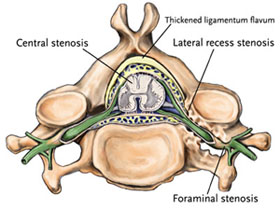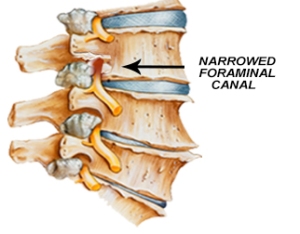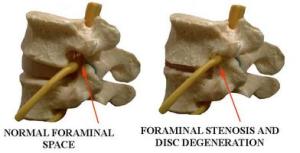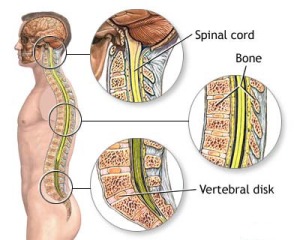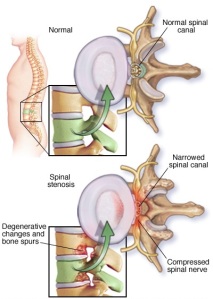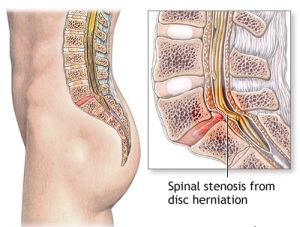Do you have a foraminal spinal stenosis? Want to know about this disease? Then, read thoroughly this blog.
What do you mean by Forminal Spinal Stenosis?
This
is a type of spinal stenosis which may occur due to the narrowing of
vertebral foramen either from the debris or other conditions. When the
foramen of patients starts narrowing, the nerves may compress
simultaneously. The compression of nerve may lead to severe pain which
may be felt in either arms or legs. Foraminal stenosis may be seen any
region of the spine; but most probably it is observed in the neck or
lower back part of a human being.
How do you know if you have foraminal stenosis?
The
symptoms of this stenosis include numbness in the affected area. It
means you may feel numbness where the stenosis is occurred. If the
stenosis is present in the lower back region, then you may feel the
symptoms in the lower extremities. Whereas stenosis in the cervical
part, you will feel pain in the arms, shoulders and hands. As this
disease goes on, the symptoms will get worse. As a result it will
eventually lead to muscular weakness and sensation loss.
Treatment of Foraminal Stenosis
Whenever you will go for a foraminal spinal stenosis treatment,
first the physicians will analyze several factors to determine the best
procedure to treat this disease. Foraminotomy is the more effective
treatment to cure this disease. Before recommending surgical treatment,
the doctors first determine the extent of the pain associated with your
foraminal stenosis, the age as well as physical condition of the
patient.



